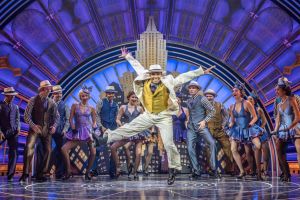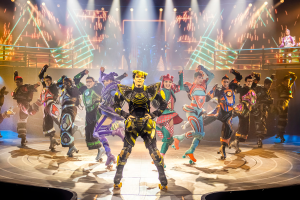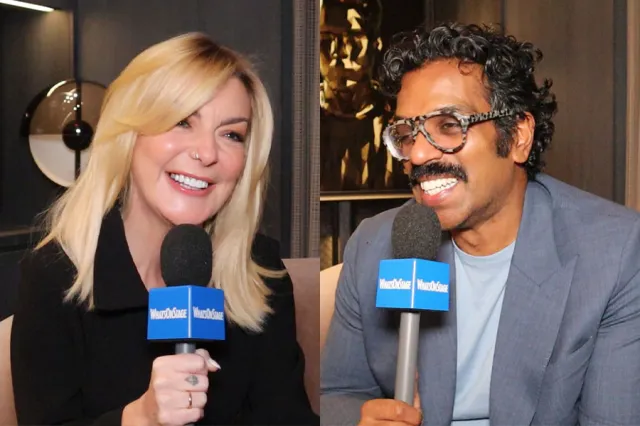Tales of the Bush, the Understudy & Other Theatre Projects
The time is coming round for list and gifts and, if you’ve already ticked off my own definitive critical biography, Ken Campbell: The Great Caper (Nick Hern Books), you’ll want to know about the other best theatre books of the year, starting with the handsome new fortieth birthday celebration of the burning Bush Theatre, Close-Up Magic (Third Millennium), in which a whole bunch of critics (including yours truly, Charles Spencer, Mark Shenton, Sam Marlowe, Claire Allfree and Aleks Sierz) itemise their highlights and memories.
The best writing, though, comes from the practitioners themselves, and there are some really treasurable and evocative essays by, among many others, Dusty Hughes, Snoo Wilson (claiming that a lady who projectile-vomited down the back of a slumbering hack did nothing to disturb his equilibrium, or indeed, his slumber), Simon Callow, Terry Johnson, Dominic Dromgoole, Catherine Johnson, Mike Bradwell and Josie Rourke.
This volume surely establishes the Bush as the best documented fringe theatre of all time, following as it does the 25th anniversary Bush Theatre Book (Methuen), edited and introduced by Bradwell, with a fine essay by David Edgar, a selection of celebrity testimonials and a couple of short plays. I wonder if the Bush’s new home on the Uxbridge Road will generate a similar fondness among its habitues and witnesses.
Part of the charm of the old Bush was the ridiculous impossibility of the place, its discomfort, its battle with the pub downstairs, its location on a busy street corner right next to the Shepherd’s Bush Empire and the scruffy Green. But what a crucible of energy and invention it’s been.
You have no idea of the work that’s gone into the place until you read Tim Fountain‘s piece about his time (four years) as literary manager, a job he took after being prosecuted for benefit fraud; or Hughes’s remarks about the 48-hour fit-ups punctuated with visits from a friendly landlord with supplies of cheap red plonk.
The friendly publican was an ex-boxer who dealt with any trouble in the pub himself, the police knowing better than to get involved. But as managements changed, and ownership became more and more impersonal, relations between the theatre and the pub rapidly deteriorated until, in recent years, there was absolutely no cross-over at all.
I don’t think David Weston has ever appeared at the Bush, but his riveting and often very funny diary of understudying Ian McKellen on the RSC’s much-travelled production of King Lear — Covering McKellen (Rickshaw) is in itself a witty title in respect of a show where a nude McKellen did indeed prove himself every inch a king — is a worthy bouquet of Bush-style anecdotes and hard luck stories.
On the day that Serena (Sir Ian) first stripped off in rehearsal, Weston realised that he really did have only a small part in the play. And he trundles off with the company, happy (or happy-ish) with his lot as Gentleman in Lear and a Butler in The Seagull, moaning about other performances, describing meals and missing football matches.
Which reminds me of the time of the Actors Company, when McKellen and Edward Petherbridge announced a new democracy of casting, in which McKellen would play Hamlet and a waiter. Oh, and what was the second play called? “The Waiter.”
There’s a goodly spread of anecdotes, too, in Jonathan Croall‘s majestic, updated reissue of John Gielgud: Matinee Idol to Movie Star (Methuen), an essential book as both biography and record of a theatrical century. Croall wrote the first version when Gielgud was still alive.
Ten years on, he has interviewed another one hundred people, and made his portrait more personal, and also more critical, with access to many more papers and letters (a selection of those letters was published in 2004, edited by Richard Mangan).
I’m usually immune to “how to” books on theatre, but Di Trevis‘s Being a Director (Routledge) is an exception to the rule, a beautifully written and brilliant job description, tethered at all points to her own personal experience and learning.
I must alert you, too, to three exceptional new books written by colleagues and friends which are not specifically about the theatre: Henry Hitchings’s The Language Wars (John Murray), which entertainingly shows how language changes in its usage; Simon Garfield’s Just My Type (Profile), a stunningly interesting book about, of all things, fonts — fonts in type-setting, advertising, design, in everything; with a history of the pioneers, fonts of all knowledge, you might say; and Rhoda Koenig’s The New Devil’s Dictionary (Lyons Press), a centenary new version of Ambrose Bierce’s classic that wittily reveals the true meaning of words, as in “Arguably = probably not,” “Share = annoy,” and “Fast food = edible matter that shortens the time necessary to reach the grave.”
Finally, the book I’ve been dipping in and out of all year is Richard Pilbrow‘s A Theatre Project (Plasa Media), a huge and superbly illustrated scrapbook of Pilbrow’s life as a lighting designer, producer, and theatre design consultant at Olivier’s National, with Hal Prince and Stephen Sondheim in London, and in theatres all over North America.
It’s an absolute joy to read and, because of Pilbrow’s technical involvement (he founded the company, Theatre Projects, that revolutionised stage lighting, sound and theatre technology), you read a history of theatre from an entirely new and fresh perspective.












